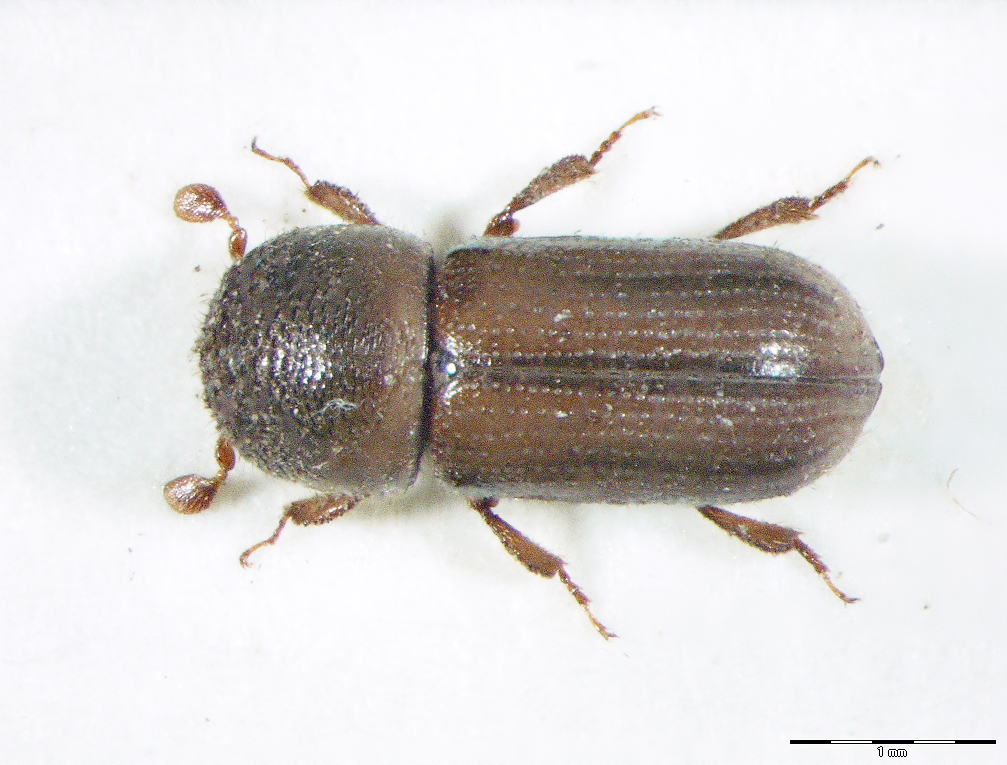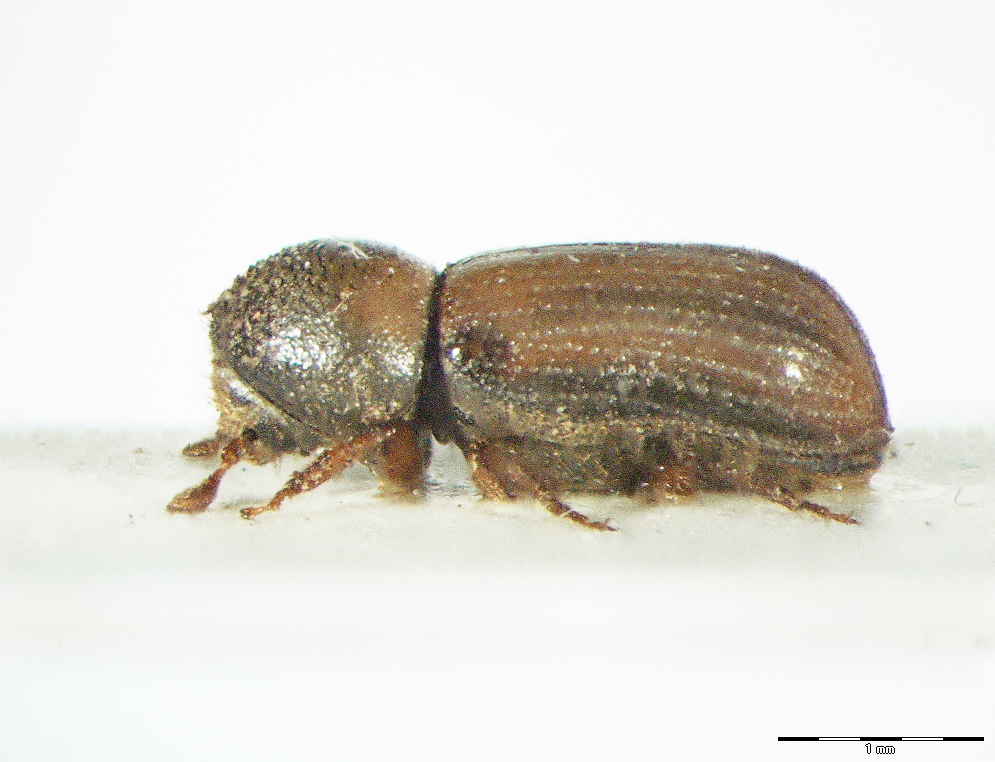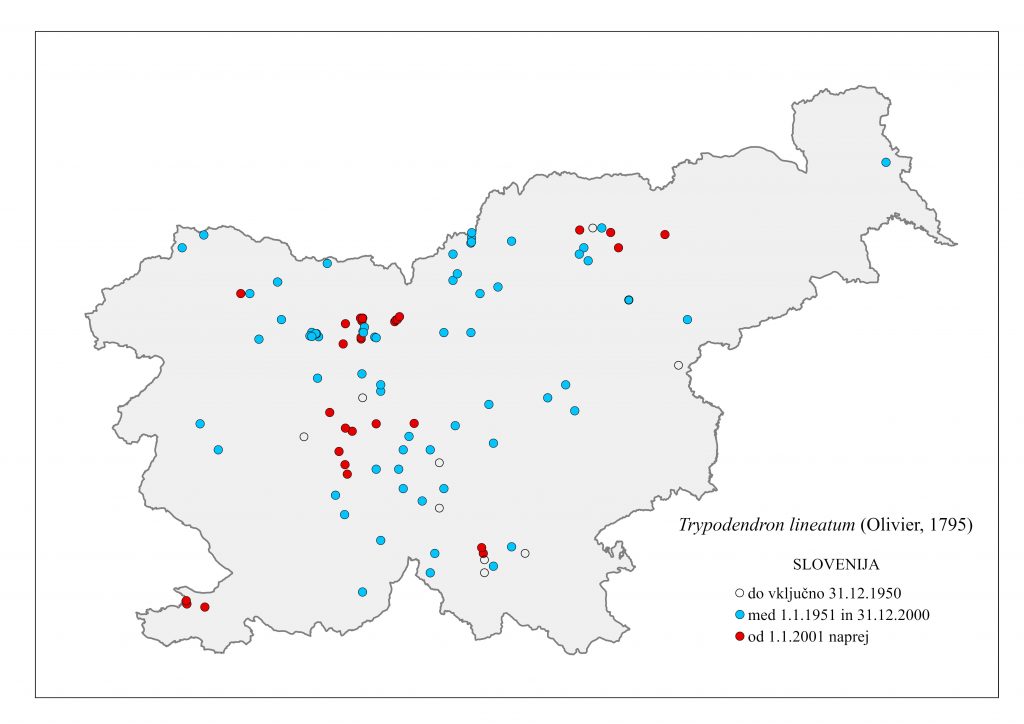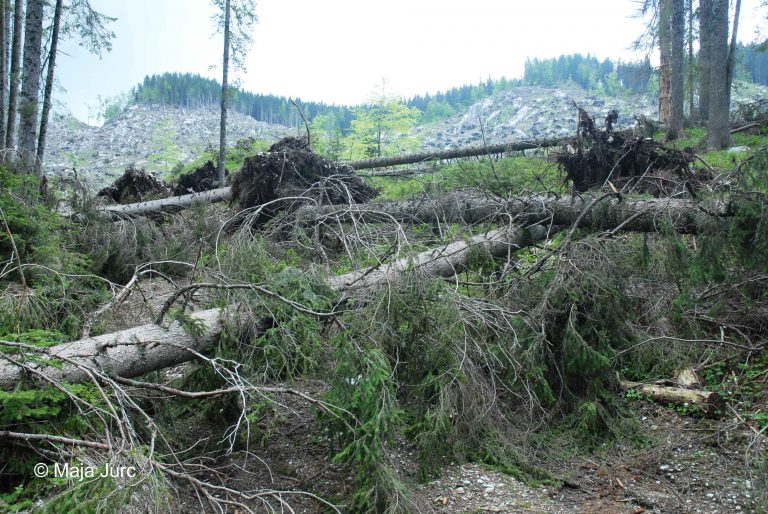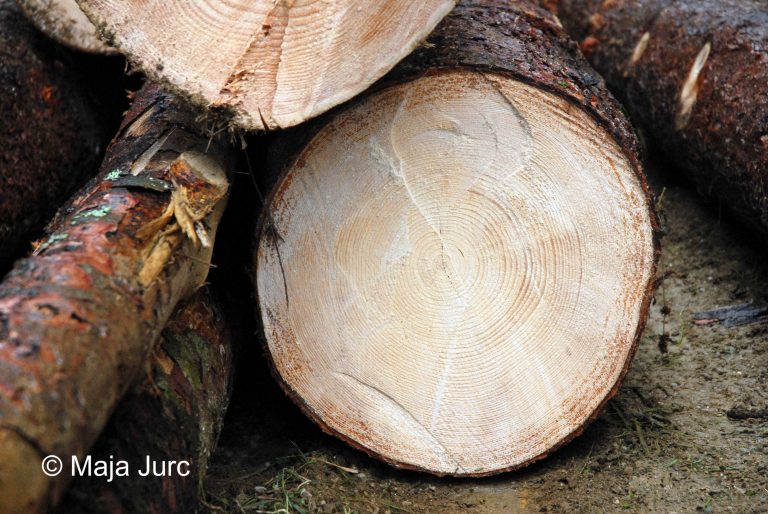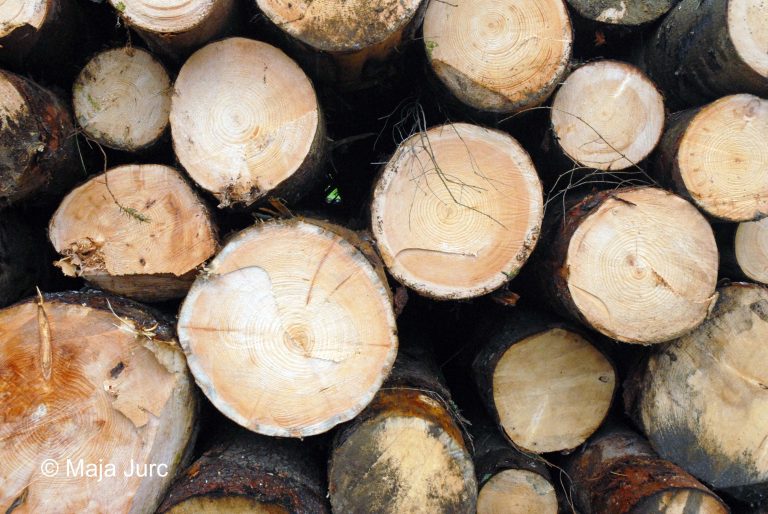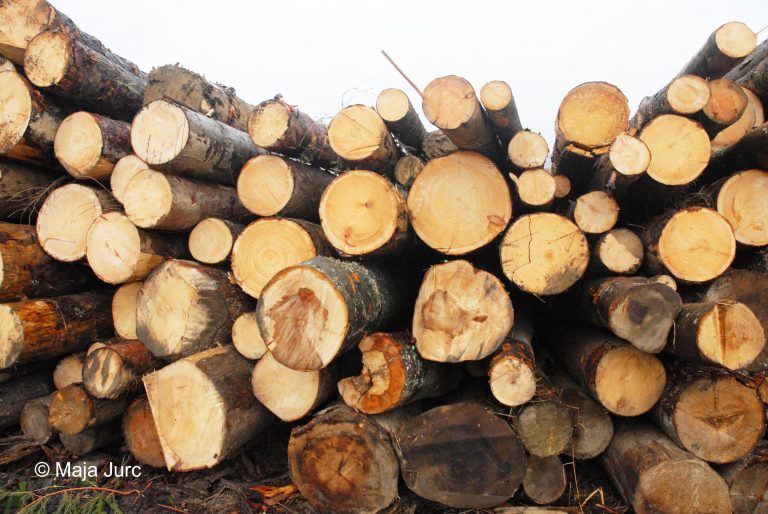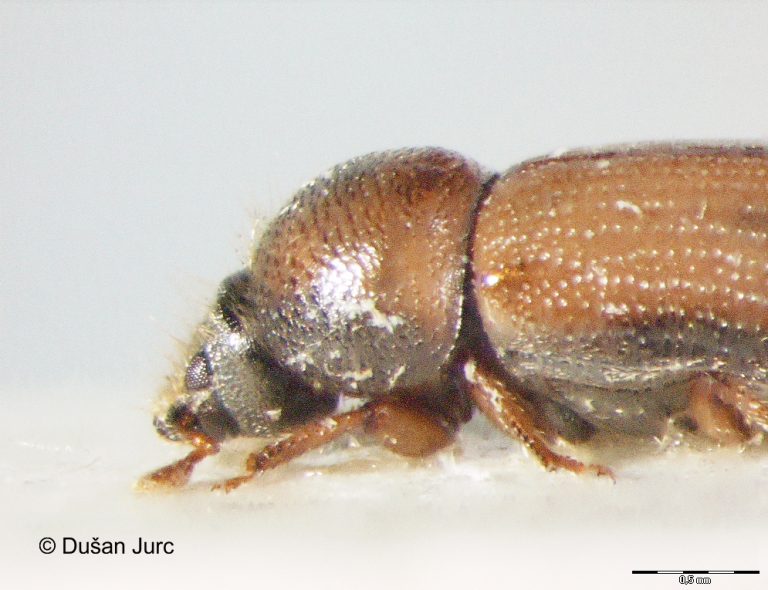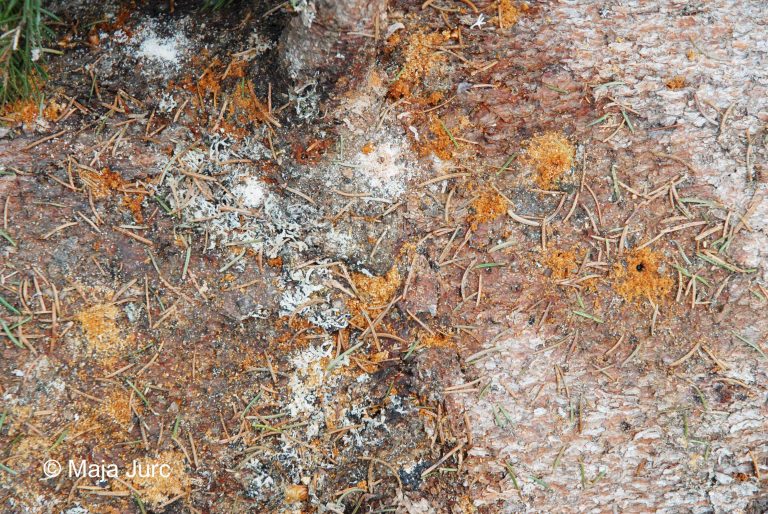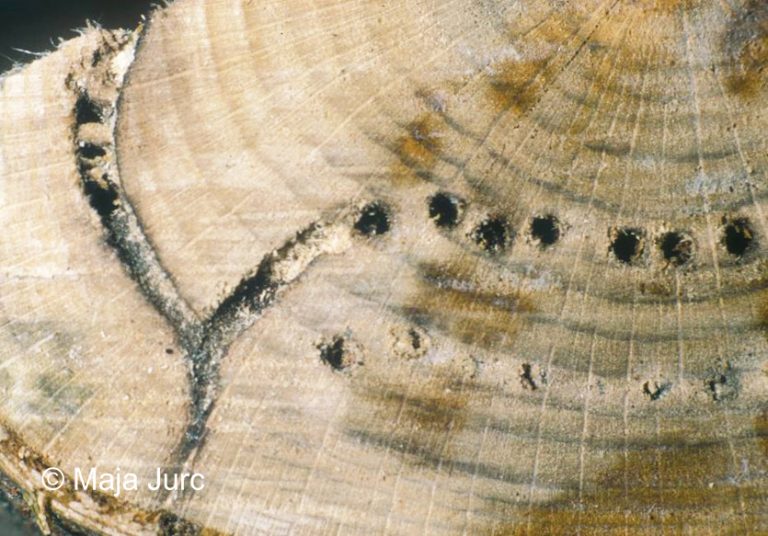39.03. Trypodendron lineatum (Olivier, 1795)
Presence
E: AU BE BH BU BY CR CT CZ DE EN FI FR GB GE GR HU IR IT LA LS LT LU MC NL NR NT PL RO SK SL SP ST SV SZ YU
N: AG EG LB MO TU
A: ES FE GAN HEI IS JA JIL KZ MG NC NE NMO QIN SC SCH SHA SHN TR WS XIN
NAR
Figure 187: Trypodendron lineatum, dorsal, lateral (Photo: Maja Jurc)
Older catalogs and keys – citations of name
Siegel 1866: Xyloterus lineatus Ol.; Grüne 1979: Trypodendron lineatum Olivier, 1795; Freude, Harde, Lohse 1981: Xyloterus lineatus Olivier; Titovšek 1988: Xyloterus lineatus (Olivier); Pfeffer & Knížek 1993: Xyloterus lineatus (Olivier, 1795); Pfeffer 1995: X. lineatus (Olivier, 1795).
Figure 188: Trypodendron lineatum, distribution map according to historical and recent data
Ecology and presence in Slovenia
The species is present in Europe, North Africa, Asia and the Nearctic. Siegel (1866) states that the species “is not rare in Carniola, almost in all conifers”. T. lineatum is widespread and common throughout Slovenia (Figure188). Polyphagous on conifers, hosts include Picea abies, P. orientalis, P. jezoensis, P. obovata, P. omorica, P. orientalis, Pinus sylvestris, P. mugo, P. strobus, P. cembra, P. halepensis, P. heldreichi, P. peuce, P. pinaster, P. sibirica, P. sylvestris, P. nigra, Abies alba, Abies pinaster, P. pinaster, P. sibirica, P. nordmanniana, Larix decidua, L. sibirica, L. kaempferi, Cedrus atlantica, C. libani, Pseudotsuga menziesii, Tsuga canadensis. In Slovenia, the species has been frequently caught in traps, the recorded hosts being Picea abies, Pinus sylvestris, P. nigra, Abies alba and Larix decidua. A xylomycetophagous and monogamous species, it develops one generation per year and swarms in March. The ladder-shaped tunnel system consists of a borehole, maternal galleries and larval tunnels. The tunnels darken after the death of the fungi. The length of the beetles is 3.0-3.4 mm. The elytra are yellowish with longitudinal stripes, finely punctate. The antenna scape is ovoid (Figure 187). As a secondary-tertiary species, it infests damaged and felled trees and fresh logs, also colonising debarked trunks when sufficient moisture is present. Pheromones: ethanol, ą-Pinene, 3-hydroxy-3-mathylbutan-2-one and Lineatin (Vité 1978, Borden 1968, Francke 1973, Francke & Heemann 1974; Bauer & Vité 1975).

